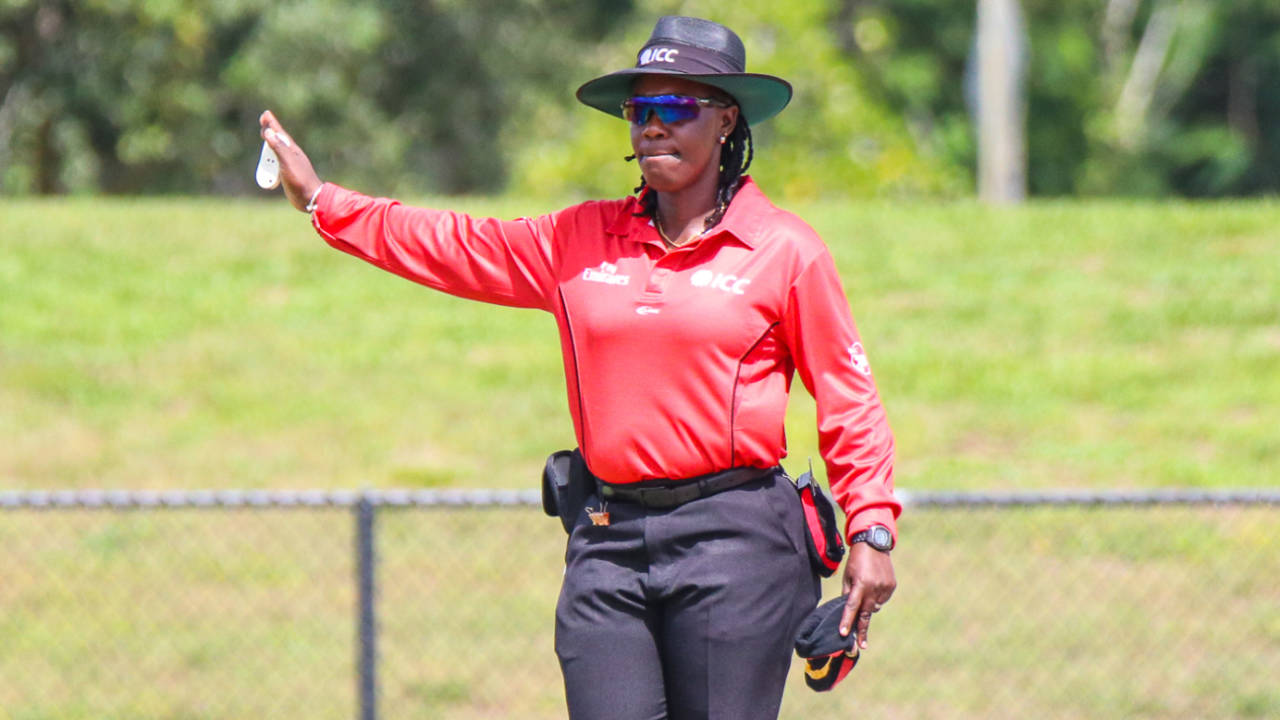TV umpire to call front-foot no-balls in Women's T20 World Cup
This will be the first global tournament where on-field umpires will not monitor front-foot no-balls
Nagraj Gollapudi
11-Feb-2020
Peter Della Penna
Satisfied with the recent "successful" trials, the ICC has decided to take the big step of leaving the adjudication of the front-foot no-balls solely to the third umpire for the upcoming Women's T20 World Cup, starting February 21 in Australia. This will be the first global tournament where the on-field umpires will not monitor the front-foot no-balls.
Having discontinued early trials in 2016, the ICC opted to reintroduce the system of allowing the third umpire to exclusively call the front-foot no-balls for the first time during the T20I series between India and West Indies in late 2019, followed by limited-overs series between West Indies and Ireland in the Caribbean in January 2020.
In a media release on Monday, the ICC said the trials were initiated in 12 matches and out of the 4717 deliveries bowled, the third umpire called 13 no-balls (0.28% of total deliveries). "All deliveries were judged accurately," the ICC said.
According to Geoff Allardice, ICC's general manager of cricket, front-foot no-balls were "difficult" for the on-field umpires to call "accurately", albeit that percentage being low. However, Allardice said it was pertinent that the no-balls be called accurately and hence it was decided that the third umpire take charge. "Cricket has an excellent track record of introducing technology to support the decision making of our match officials and I'm confident that this technology will reduce the small number of front foot no ball errors at the ICC Women's T20 World Cup," he was quoted in the media release.
"No-balls are difficult for umpires to call accurately, and even though the percentage of deliveries that are no balls is low, it is important to call them correctly. Since we first trialed this concept in the ODI series between England and Pakistan in 2016 the technology has improved significantly, enabling us to introduce it cost-effectively, and with minimum impact on the flow of the game."
New Zealand allrounder Suzie Bates, who is also the only woman on the current MCC World Cricket Committee, welcomed the decision, saying it would be "fair for everyone".
"It's interesting to trial that for the first time at a World Cup," Bates told NZC. "But I think if you have Twenty20 cricket recently, they tend to only refer [to the third umpire] when the batter has been given out, and then realise it's been a no-ball that the on-field umpire may have probably missed during the game.
"I think it's fair for everyone. As a batter, you always want a free hit, so if there's a free hit, and a few extra runs, that's not too bad. It would be interesting to see how many actual no-balls there are in a match. I think, in general, in the female game we do tend to keep our foot behind the line; it's probably more the waist-high full-tosses as well, I am not sure what the rule is on that. We'll see how it goes, but as I said, a free hit is always lovely."
Last August, Allardice had explained the process how the third umpire would call the no-balls. "The third umpire will be presented an image of the front foot landing within a few seconds. He would communicate to the on-field umpire that a no-ball has been delivered, so every delivery on the field would be played as a fair delivery until called otherwise. The footage is shown on a slight delay, it goes to super slo-mo as the foot approaches the point of landing, and then it freezes. The routine works well, with the third umpire judging the no-ball off a picture that is not always shown on the broadcast."
In December 2019, when the trial was introduced during the India-West Indies series, the ICC had pointed out that in the event the third umpire found the pictures inconclusive to call a no-ball, "any benefit of doubt" would lie with the bowler. "It's important to note that any benefit of the doubt lies with the bowler, and if a late no-ball call is communicated, then the on-field umpire will rescind a dismissal (if applicable) and call no-ball," the ICC had said.
Nagraj Gollapudi is news editor at ESPNcricinfo
